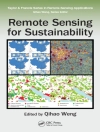By emphasizing on the Pamir region a comprehensive overview of path-dependent and recent developments in a remote mountain region is provided in this book. Overall neglect in the mountainous periphery is contrasted by shifting the centre of attention to the Pamirs situated at the interface between South and Central Asia. From colonial times to now there has been a debate on grasping and locating the area. Here field-work based contributions are collected to provide a variety of perspectives on the Pamirs highlighting transformation and transition in Post-Soviet societies as well as in Afghanistan and Pakistan. The similar ecological environment across borders features the common ground while analyzing development processes in a set of case studies that aim at highlighting certain aspects of regional development.
Jadual kandungan
1. Pamirian Spaces – Mapping Process Geographies in the Mountainous Periphery.- 2. Pamir or Pamirs – Perceptions and Interpretations.- 3. Who is mapping the Pamirs? A Review on Plant and Vegetation Sciences.- 4. Geomorphic Features of the Eastern Pamirs, with a Focus on the Occurrence of Intermontane Basins.- 5. Water of the Pamir – Potential and Constraints.- 6. Khans, Kings, Communists, Warlords, and Presidents: Afghan Kirghiz Socio-economic Strategies for Extorting and Extracting from the State.- 7. Changes in the Relationship between Borders and Pastoral Mobility in Mountain Regions of Central Asia.- 8. Seasonal Pasture Use and Vegetation Cover Changes in the Alai Valley, Kyrgyzstan.- 9. Diversity of Seasonal Migration of Livestock in the Eastern Alai Valley, Southern Kyrgyzstan.- 10. Kezüü and Novad: A Form of Pastoralism in the Eastern Alai Valley, Southern Kyrgyzstan.- 11. External Support and Local Agency: Uncertain Transformations of Livelihoods in the Pamirian Borderland of Tajikistan.- 12. The Current Status of Lifestyle and Occupations in the Wakhan Area of Tajikistan.- 13. Political Ecology of Human-Environmental Change in Gojal, Gilgit-Baltistan, Pakistan.- 14. The Changes in Regional Structure and Land Use related to External Factors in Hussaini Village, Northern Pakistan.- 15. Humanitarianism across Mountain Valleys: “Shia Aid” and Development Encounters in Northern Pakistan and Eastern Tajikistan.- 16. History of the Development of the Pamir Region of Tajikistan (Gorno-Badakhshan).- 17. Conclusions: Why do we need to make Efforts to Map the Transition?
Mengenai Pengarang
Prof. Hermann Kreutzmann has been a professor of human geography at Freie Universität Berlin since April 2005. He had previously completed his doctorate at the Department of Earth Sciences at Freie Universität Berlin in 1989. Kreutzmann’s research focuses on geographical development studies. He conducts his research mainly in high mountain areas, especially in South and Central Asia, in the context of globalization and climate change debates. His research also focuses on sustainable resource use as well as minority studies and migration research.
Hermann Kreutzmann is a recipient of the Tianshan Prize China from the Xinjiang Uyghur Autonomous Region. He received the award for his “outstanding contribution to the economic and social progress” of this region located in northwest China. For more than 25 years Kreutzmann has been conducting research there on issues of resource use and the development of mountain regions. In addition, he was honored for his contribution to scientific cooperation and his support of German-Chinese cooperation in the education of young scientists. This award is the highest that can be awarded to a foreign expert in Xinjiang.












